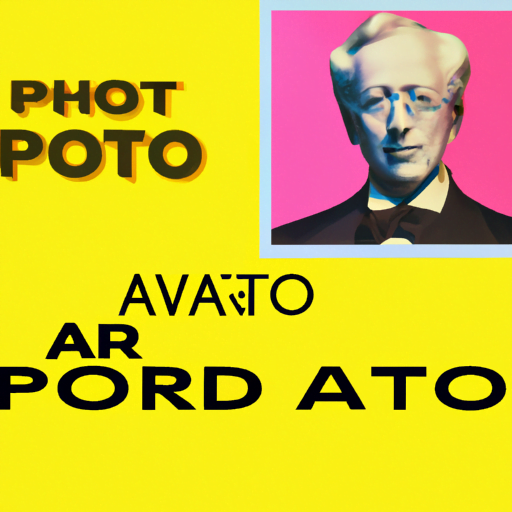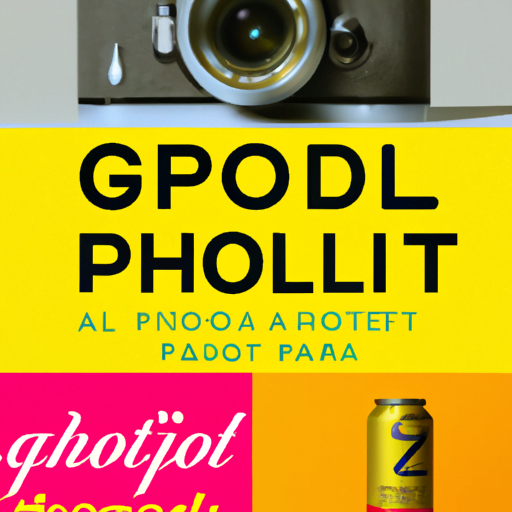
-
Table of Contents
The Role of Typography in Branding

Typography plays a crucial role in branding, as it is one of the most powerful tools for communicating a brand’s personality, values, and message. The choice of typeface, font size, spacing, and other typographic elements can significantly impact how a brand is perceived by its target audience. In this article, we will explore the importance of typography in branding and provide valuable insights into how it can be effectively used to create a strong and memorable brand identity.
The Psychology of Typography
Typography has a profound psychological impact on individuals, influencing their perception and interpretation of information. Different typefaces evoke different emotions and associations, which can be leveraged by brands to create a specific brand image. For example, a bold and modern typeface may convey a sense of innovation and forward-thinking, while a classic serif font may evoke a feeling of tradition and reliability.
Research has shown that typography can influence how people perceive the credibility and trustworthiness of a brand. A study conducted by the Massachusetts Institute of Technology (MIT) found that participants rated a website as more trustworthy when it used a high-quality and well-designed typeface compared to a poorly designed one. This highlights the importance of selecting the right typography to establish a positive brand perception.
Creating a Consistent Brand Identity
Typography is a key element in creating a consistent brand identity across various touchpoints. Consistency in typography helps to establish brand recognition and build trust with the audience. When a brand consistently uses the same typefaces, font sizes, and spacing in its marketing materials, website, and packaging, it creates a cohesive and unified brand experience.
Take the example of Coca-Cola, one of the most recognizable brands in the world. The company has consistently used its iconic Spencerian script logo since the late 19th century. This distinctive typography has become synonymous with the brand and is instantly recognizable to consumers worldwide. By maintaining consistency in its typography, Coca-Cola has successfully built a strong and memorable brand identity.
Choosing the Right Typeface
When selecting a typeface for a brand, it is essential to consider the brand’s personality, target audience, and message. Different typefaces have different characteristics that can evoke specific emotions and associations. Here are a few examples:
- Serif: Serif typefaces, such as Times New Roman, have small decorative lines at the ends of characters. They are often associated with tradition, reliability, and authority. Serif fonts are commonly used in industries such as law, finance, and academia.
- Sans-serif: Sans-serif typefaces, like Helvetica, have clean and modern lines without the decorative lines at the ends of characters. They are often associated with simplicity, clarity, and modernity. Sans-serif fonts are commonly used in technology, fashion, and lifestyle brands.
- Script: Script typefaces, such as Brush Script, mimic handwriting and convey a sense of elegance, creativity, and personalization. They are often used in luxury brands, wedding invitations, and artistic industries.
It is important to choose a typeface that aligns with the brand’s personality and resonates with the target audience. For example, a tech startup targeting a young and tech-savvy audience may opt for a modern and minimalist sans-serif typeface to convey a sense of innovation and simplicity.
Typography in Logo Design
Typography plays a crucial role in logo design, as it is often the primary visual element that represents a brand. A well-designed logo should effectively communicate the brand’s identity and values. Typography can be used alone or in combination with other design elements to create a unique and memorable logo.
Let’s take a look at the logo of Nike, one of the most recognizable logos in the world. The Nike logo, also known as the “Swoosh,” is a simple yet powerful design that consists of a curved checkmark shape. The typography used in the logo is a custom-designed typeface called “Nike,” which complements the simplicity and dynamic nature of the Swoosh. The combination of the iconic Swoosh and the custom typography has helped Nike establish a strong and instantly recognizable brand identity.
Typography in Advertising and Marketing
Typography plays a crucial role in advertising and marketing materials, as it helps to convey the brand’s message and capture the attention of the target audience. The right typography can make a significant difference in the effectiveness of a marketing campaign.
For example, Apple’s advertising campaigns are known for their minimalist and clean design, which is reflected in their typography choices. Apple uses a simple and modern sans-serif typeface called “San Francisco” in its marketing materials, reflecting the brand’s commitment to simplicity and innovation. The consistent use of typography across Apple’s advertising campaigns helps to create a cohesive and recognizable brand image.
Case Study: Airbnb
Airbnb, the online marketplace for vacation rentals, underwent a rebranding in 2014 to establish a more cohesive and unified brand identity. As part of the rebranding, Airbnb introduced a new logo and typography.
The new Airbnb logo, known as the “Bélo,” is a simple and abstract symbol that represents belonging and connection. The typography used in the logo is a custom-designed typeface called “Airbnb Cereal,” which was created specifically for the brand. The typography is clean, modern, and versatile, reflecting the brand’s commitment to providing a seamless and enjoyable travel experience.
The rebranding helped Airbnb establish a stronger and more recognizable brand identity, enabling the company to expand its services and reach a wider audience.
Conclusion
Typography plays a vital role in branding, as it helps to communicate a brand’s personality, values, and message. The choice of typeface, font size, spacing, and other typographic elements can significantly impact how a brand is perceived by its target audience. By understanding the psychology of typography and selecting the right typeface, brands can create a consistent and memorable brand identity.
Whether it’s in logo design, advertising, or marketing materials, typography should be carefully considered to ensure it aligns with the brand’s personality and resonates with the target audience. By leveraging the power of typography, brands can establish a strong and recognizable presence in the market, ultimately leading to increased brand loyalty and success.
